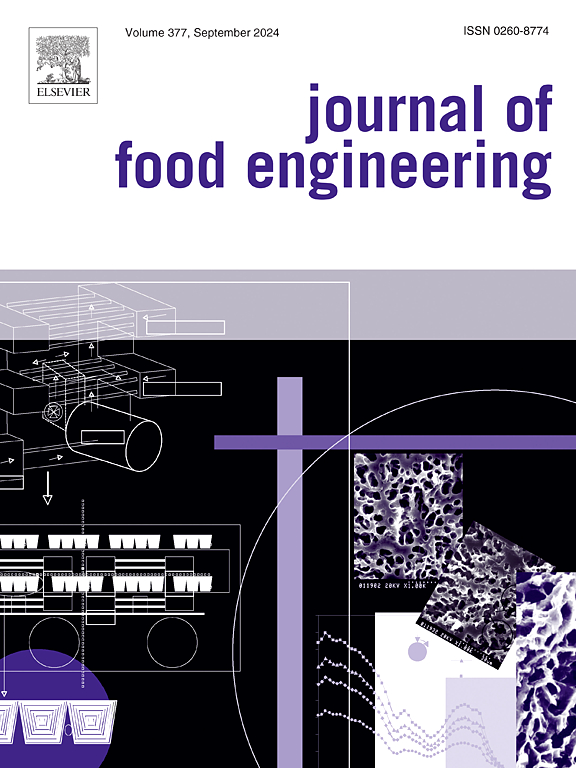Synthesis of sugar laurate esters via lid-designed lipase immobilized in magnetic nanoflower system
IF 5.8
2区 农林科学
Q1 ENGINEERING, CHEMICAL
引用次数: 0
Abstract
Sugar fatty acid esters, serving as multifunctional biosurfactants, are extensively utilized in food formulations for emulsification, foam stabilization, and microbial preservation. Enzymatic transesterification using lipases offers distinct advantages over chemical synthesis, including mild reaction conditions and reduced energy consumption. In this study, we engineered a cold-adapted lipase (Lip) through lid domain truncation and mutation, yielding the optimized variant Lip-8 to alleviate substrate channel steric hindrance, coupled with tannic acid-modified magnetic nanoflowers (TA-MNFs) via a one-pot immobilization strategy to create Lip-8/TA-MNFs. This immobilized enzyme demonstrated significantly enhanced catalytic performance, achieving a 12.91-fold activity increase compared to free lipase. Under optimized conditions (40 °C, 36 h), the system synthesized fructose laurate esters with 93.07 % conversion efficiency. Structural characterization confirmed the predominant formation of mono- and di-esters, which exhibit dual surfactant and emulsifying properties suitable for food-grade applications.
磁性纳米花固定化脂肪酶合成月桂酸糖酯
糖脂肪酸酯是一种多功能生物表面活性剂,广泛应用于食品配方中,用于乳化、泡沫稳定和微生物保存。与化学合成相比,使用脂肪酶进行酶交换具有明显的优势,包括反应条件温和和能耗降低。在这项研究中,我们通过盖子结构域的截断和突变,设计了一种冷适应脂肪酶(Lip),得到了优化的变体Lip-8,以减轻底物通道的空间位阻,并通过一罐固定化策略与单宁酸修饰的磁性纳米花(TA-MNFs)结合产生Lip-8/TA-MNFs。与游离脂肪酶相比,固定化酶的催化活性提高了12.91倍。在优化条件下(40℃,36 h),系统合成月桂酸果糖酯,转化率为93.07%。结构表征证实了单酯和二酯的主要形成,它们具有双重表面活性剂和乳化性能,适合食品级应用。
本文章由计算机程序翻译,如有差异,请以英文原文为准。
求助全文
约1分钟内获得全文
求助全文
来源期刊

Journal of Food Engineering
工程技术-工程:化工
CiteScore
11.80
自引率
5.50%
发文量
275
审稿时长
24 days
期刊介绍:
The journal publishes original research and review papers on any subject at the interface between food and engineering, particularly those of relevance to industry, including:
Engineering properties of foods, food physics and physical chemistry; processing, measurement, control, packaging, storage and distribution; engineering aspects of the design and production of novel foods and of food service and catering; design and operation of food processes, plant and equipment; economics of food engineering, including the economics of alternative processes.
Accounts of food engineering achievements are of particular value.
 求助内容:
求助内容: 应助结果提醒方式:
应助结果提醒方式:


